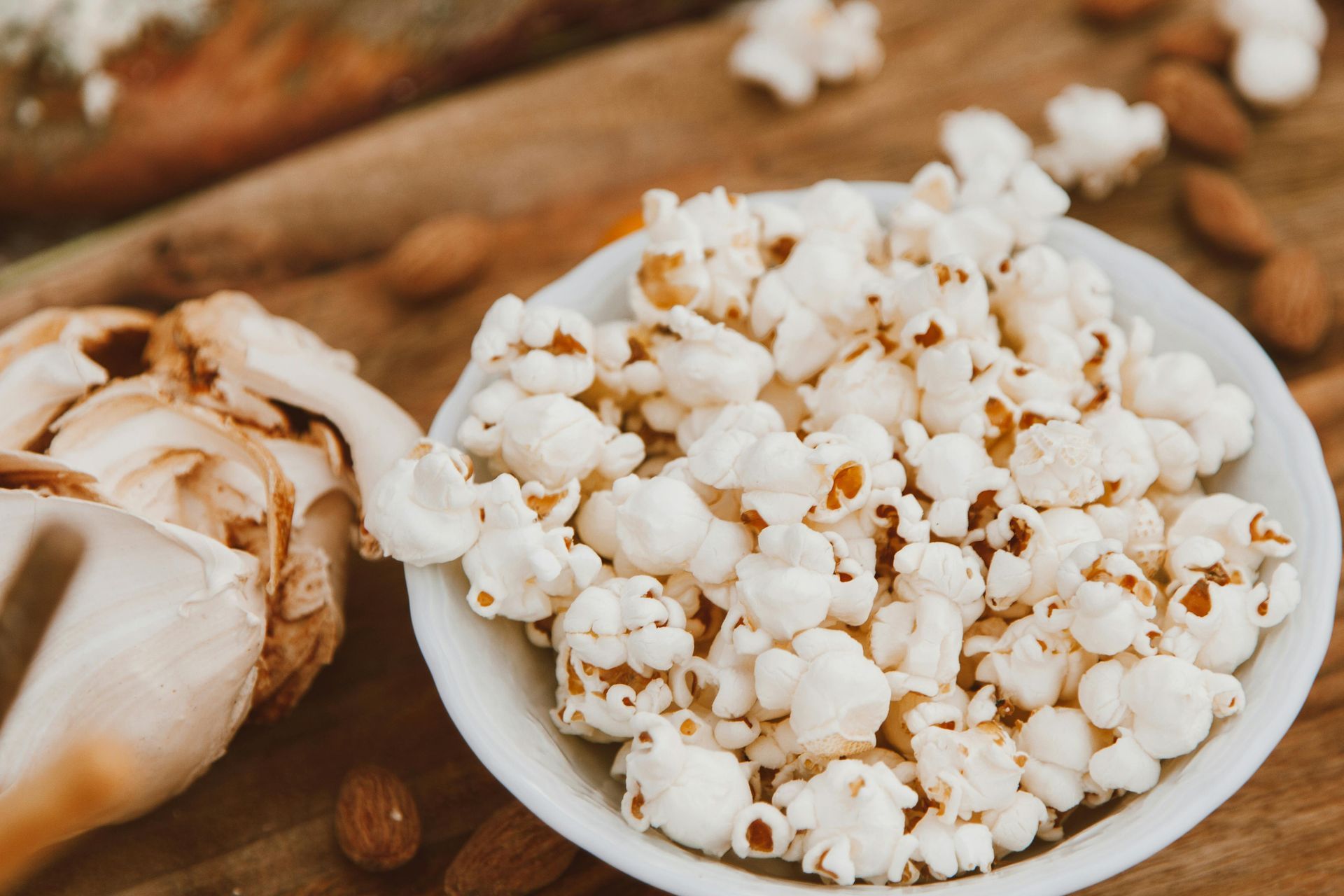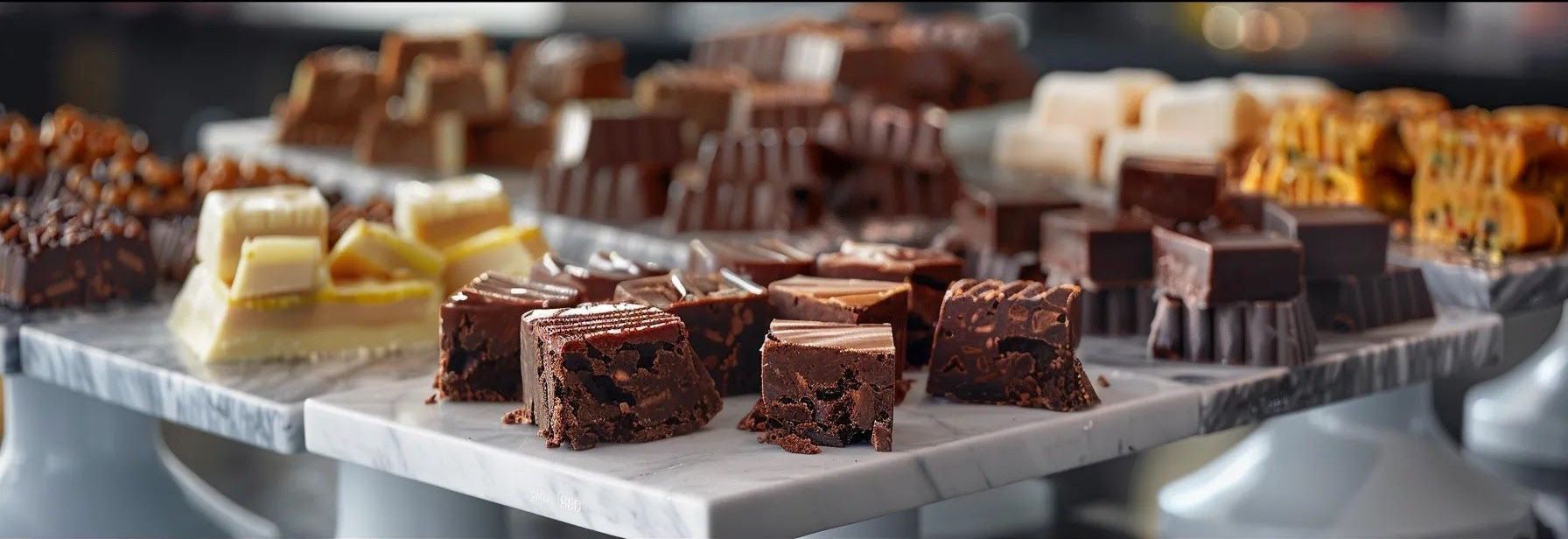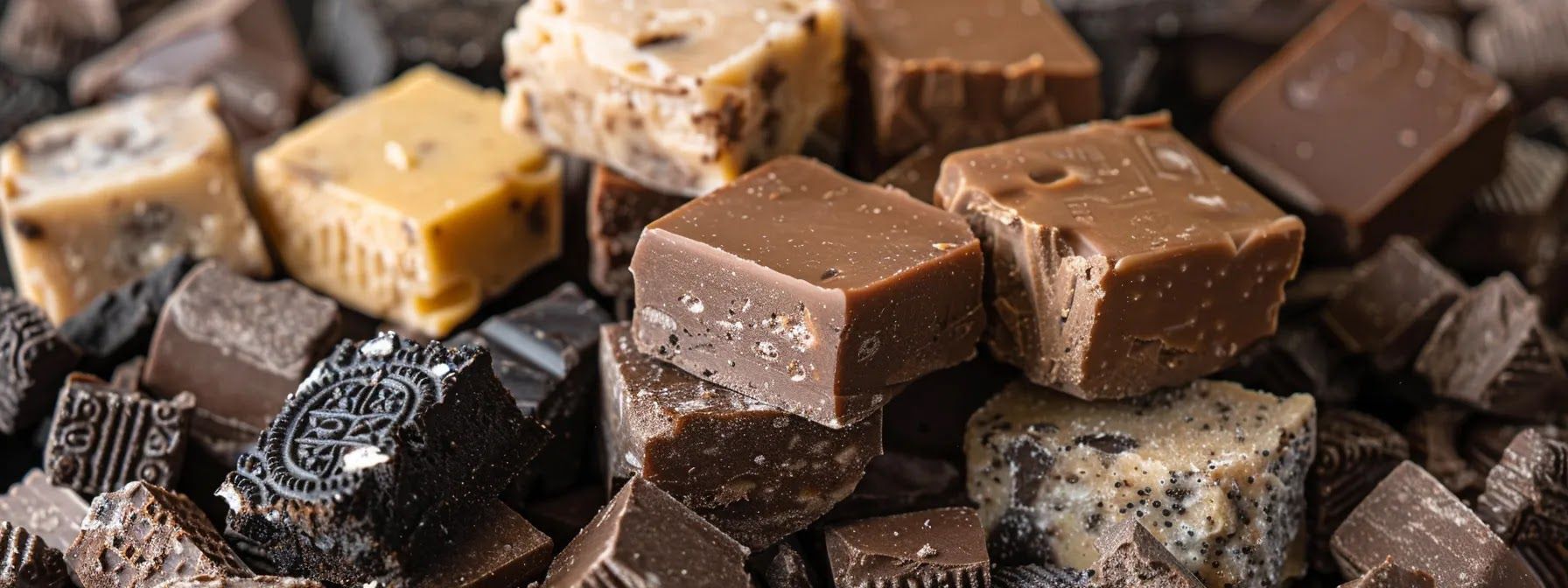The Evolution of Fudge Recipes: From Classic to Contemporary
Fudge, a beloved confection with roots dating back to the late 19th century, has radically transformed from its humble beginnings. Originally created as a failed batch of caramel, this sweet treat has evolved from simple combinations of sugar, butter, and cream to complex concoctions featuring exotic ingredients. The Oxford University Press has documented this journey, noting how fudge has incorporated elements from other desserts like pie and biscuits and adapted to new preparation methods involving controlled heat and specialized powders. Keep reading to discover how fudge recipes have adapted to modern tastes and culinary trends, from classic favorites to innovative contemporary creations.
Key Takeaways
- Fudge evolved from a simple accident to a diverse confection with global influences.
- Cookbooks played a crucial role in popularizing and standardizing fudge recipes.
- Modern fudge-making embraces innovative ingredients, catering to diverse dietary needs and preferences.
- Technology has simplified fudge preparation, making it more accessible to home cooks.
- Artisanal fudge shops have elevated the treat to gourmet status with unique flavors and presentations.
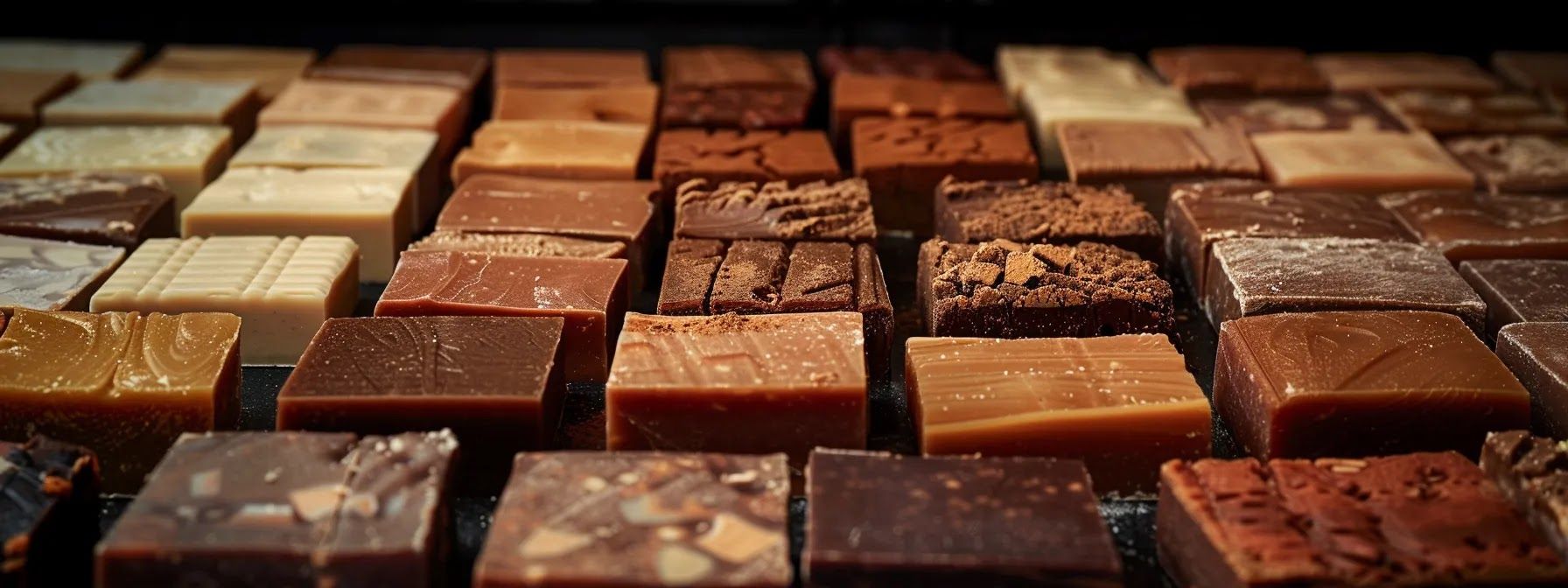
Tracing the Origins of Classic Fudge Recipes
Fudge, a beloved confection, has come a long way since its inception in the late 19th century. This sweet treat has evolved from a simple culinary accident to a staple on dessert menus and confectionery advertisements worldwide. The journey of fudge recipes showcases the transformation of ingredients, cooking methods, and flavors - from classic chocolate to modern variations like pistachio. As we explore the origins of traditional fudge, we'll uncover the key components and techniques that have shaped this indulgent delight, setting the stage for its contemporary adaptations in the world of sweets and cocktail-inspired desserts.
The Birth of Fudge in the Late 19th Century
The birth of fudge in the late 19th century marks a sweet accident in culinary history. Legend has it that a confectioner at The Culinary Institute of America mistakenly "fudged" a batch of caramels, creating a new confection brand. This happy mishap resulted in a creamy, smooth texture unlike any other sweet treat of the time, setting it apart from doughnuts and meringues. The original fudge recipe called for simple ingredients like sugar, cream, and chocolate, all mixed in a bowl and cooked to a specific temperature.
Key Ingredients in Vintage Fudge Recipes
Vintage fudge recipes rely on several key ingredients for their signature texture and flavor. Granulated sugar, not powdered sugar, formed the base of these early confections, while unsweetened chocolate provided a rich cocoa taste. Butter and cream created the smooth, creamy consistency, with vanilla extract adding depth. Some recipes incorporated chocolate chips for extra texture, which was less common in the earliest versions. These calorie-dense treats didn't typically include whipped cream, as it became popular in later variations. The simplicity of these ingredients made fudge an accessible treat for home cooks, contributing to its rapid spread through recipe exchanges and trade publications.
Traditional Cooking Methods for Classic Fudge
Traditional fudge-making demanded precision and skill, with economics crucial in ingredient selection. Cook heated sugar, cream, and chocolate in a heavy-bottomed pot to the soft ball stage (235-240°F), stirring constantly to prevent scorching. After reaching the correct temperature, they removed the mixture from heat and beat it vigorously until it thickened and lost its glossy sheen. This process created a delicate foam structure for the fudge's texture. Some recipes incorporated coconut or cashew for added flavor and crunch, requiring careful management of cooking times to maintain consistency.
- Heat ingredients to softball stage
- Remove from heat and beat vigorously
- Allow the fudge to cool and set
- Cut into squares or shapes

The Role of Cookbooks in Fudge Evolution
Cookbooks were pivotal in popularizing fudge and transforming it from a simple snack to a beloved confection. As fudge recipes transitioned from home kitchens to published works, they evolved alongside changing tastes and culinary trends. Early cookbooks featuring fudge recipes laid the foundation for its widespread appeal, while influential authors like Fannie Farmer introduced innovative variations.
Martha Stewart later reimagined fudge, incorporating it into sophisticated desserts. This evolution saw fudge move beyond its origins as a standalone treat, sometimes appearing alongside traditional favorites like bread in recipe collections. The humble spoon, once the primary tool for fudge-making, gave way to more specialized equipment as recipes became more complex and diverse.
Early Cookbooks Featuring Fudge Recipes
Early cookbooks featuring fudge recipes played a crucial role in spreading this sweet treat across American households. The humble housewife found new possibilities for using dairy products as fudge recipes began appearing in popular publications. Recognizing the growing trend, Pillsbury included fudge recipes in their cookbooks, contributing to the dessert's widespread popularity. This culinary phenomenon laid the groundwork for future franchising opportunities in the confectionery industry.
Influential Authors and Their Fudge Recipe Variations
Influential cookbook authors transformed fudge recipes, introducing innovative variations that expanded the treat's appeal. Fannie Farmer, known for her precise measurements, popularized brown sugar in fudge, creating a richer taste and deeper color. While not primarily known for sweets, Julia Child incorporated fudge into elegant desserts, elevating it from a simple snack to a sophisticated meal finale. Modern authors like Ina Garten experimented with adding dried fruits like raisins and nuts and exploring savory-sweet combinations using sea salt and iron-rich dark chocolate.
The Transition From Home Cooking to Published Recipes
The transition from home cooking to published recipes marked a significant shift in fudge-making culture. As vanilla extract became a staple ingredient, cookbook authors standardized measurements, ensuring consistent results across different kitchens. This change increased the volume of fudge recipes in circulation, with some even incorporating unique sweeteners like honey. The popularity of fudge spread beyond America's borders, reaching as far as Australia, where it became a beloved treat. Interestingly, some recipes even drew inspiration from the moon's phases, claiming that fudge made during a full moon had a superior texture.

Innovative Ingredients in Modern Fudge Making
Modern fudge-making has embraced a world of innovative ingredients, transforming this classic confection into a canvas for culinary creativity. As bakers experiment with exotic flavors and textures, the traditional fudge mixture has evolved to incorporate elements from global cuisines, challenging the norms of mass production. Vegan and gluten-free options have emerged, catering to diverse dietary needs and expanding fudge's appeal beyond its conventional boundaries. From banana split-inspired variations to birthday cake flavors, contemporary fudge recipes reflect a fusion of nostalgia and innovation, offering exciting new taste experiences while preserving the beloved treat's rich, creamy essence.
Introduction of Exotic Flavors and Textures
The evolution of fudge recipes has introduced a world of exotic flavors and textures, transforming the classic butter-based treat into a canvas for culinary creativity. Modern fudge makers now incorporate unexpected ingredients like sea salt caramel, matcha green tea, and even soft serve ice cream flavors, pushing the boundaries of traditional fudge-making. These innovative recipes often feature unique textures, such as crunchy cone pieces or swirls of gooey caramel, offering a multi-sensory experience beyond classic fudge's smooth, creamy consistency.
Vegan and Gluten-Free Fudge Recipes
Vegan and gluten-free fudge recipes have revolutionized American cuisine, offering inclusive alternatives to traditional sugar-laden confections. These modern adaptations often replace dairy with plant-based alternatives like coconut milk or almond yogurt while maintaining the rich, creamy texture fudge lovers crave. Innovative recipes incorporate gluten-free ingredients such as almond flour or coconut flour and swap out conventional chocolate syrup for dairy-free versions. Some creative variations even feature peanut butter as a primary ingredient, adding protein and a nostalgic flavor to these dietary-friendly treats.
The Influence of Global Cuisine on Fudge
Global cuisine has significantly influenced modern fudge recipes, introducing unexpected flavors and ingredients that challenge traditional notions of this classic confection. Artisanal fudge makers now incorporate elements like tart fruits, cheese, and even savory components such as chicken-flavored extracts, creating unique flavor profiles that appeal to adventurous palates. Some innovative recipes draw inspiration from wine-pairing traditions, infusing fudge with subtle red or white wine notes to create sophisticated, adult-oriented treats that come packaged in elegant cartons.
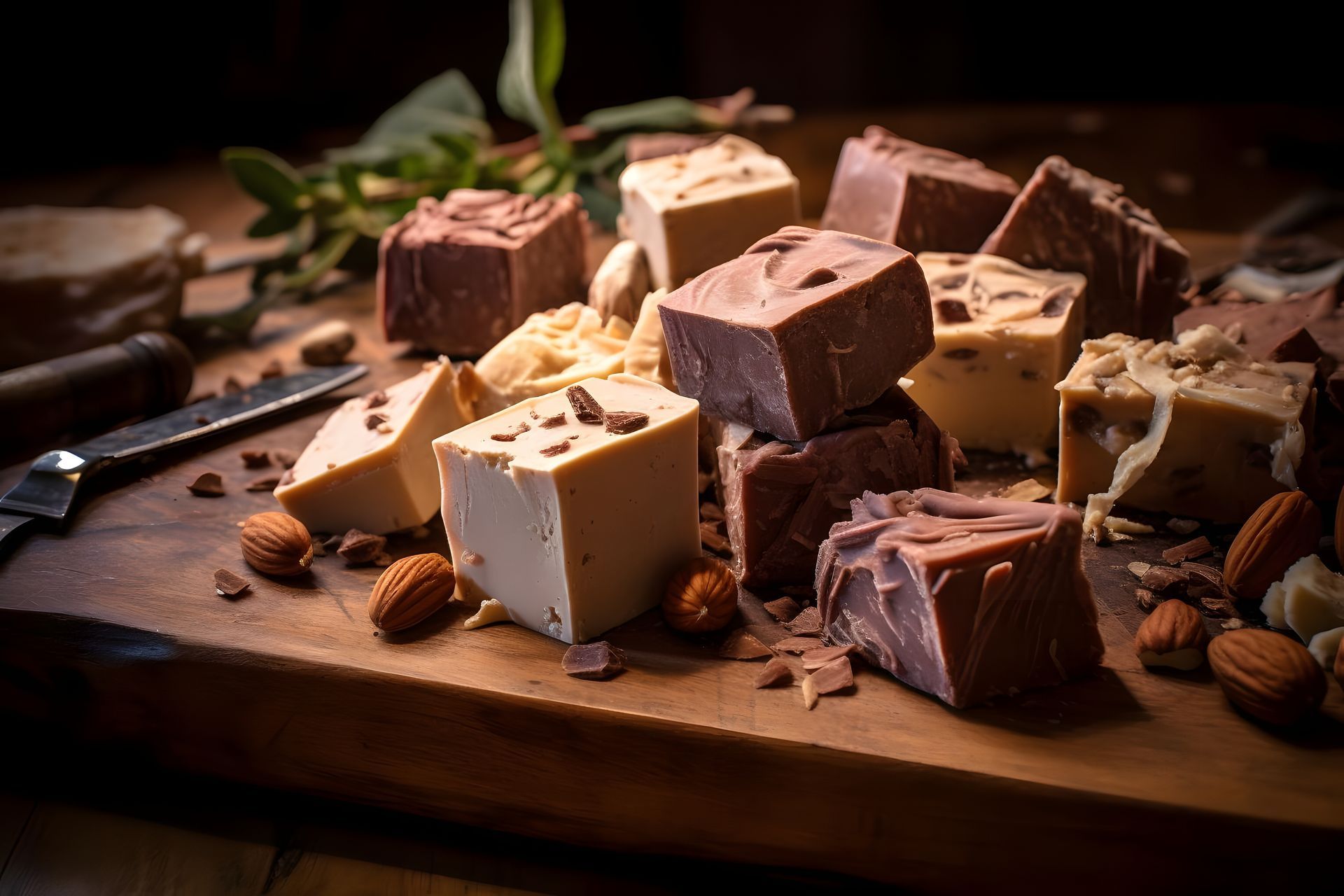
Technology's Impact on Fudge Preparation
Technology has revolutionized fudge preparation, transforming this beloved treat from a labor-intensive stovetop process to a quick and accessible delight. The journey from traditional methods to modern techniques spans continents. Innovations like refrigerants and cream cheese have expanded fudge's flavor profile and texture possibilities. Digital platforms have democratized recipe sharing, while kitchen gadgets have simplified the fudge-making process. This technological evolution has preserved the essence of classic fudge recipes in cherished cookbooks and paved the way for exciting new variations catering to contemporary tastes and dietary needs.
From Stovetop to Microwave - A Leap in Cooking Methods
The transition from stovetop to microwave fudge-making revolutionized the confectionery world, making this classic treat more accessible to home cooks and retail producers alike. Microwave technology eliminated the need for constant stirring and precise temperature monitoring, allowing even novice chefs to create smooth, creamy fudge in minutes. This leap in cooking methods opened doors for innovative flavors like blueberry sesame fudge, which might have been too delicate for traditional stovetop techniques.
Digital Platforms and the Spread of Fudge Recipes
Digital platforms have revolutionized the spread of fudge recipes, transforming how people access and share this sweet treat's history. Social media and food blogs have become virtual recipe books, allowing enthusiasts to exchange traditional and innovative fudge ideas across the globe. These platforms have even addressed challenges like high-altitude baking, with users sharing tips on adjusting recipes for different elevations. Gingerbread and orange-flavored fudge variations have gained popularity through viral posts, replacing traditional paper recipe cards with easily accessible digital formats.
How Kitchen Gadgets Have Simplified Fudge Making
Kitchen gadgets have transformed fudge-making, simplifying complex techniques in the culinary arts. Modern candy thermometers ensure precise temperature control, crucial for achieving the perfect consistency in pecan or cherry fudge varieties. Stand mixers have replaced manual beating, making incorporating ingredients for innovative flavors like cheesecake or strawberry fudge easier. These technological advancements have democratized fudge-making, allowing home cooks to easily create professional-quality confections.
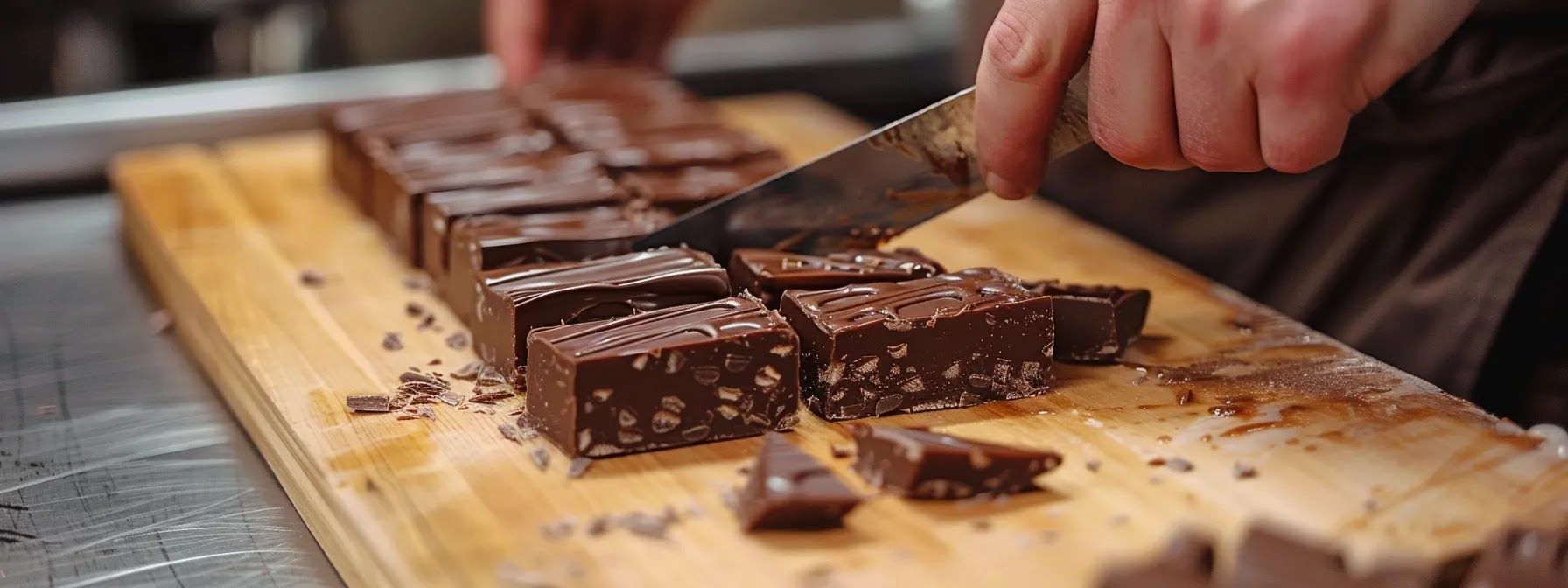
The Rise of Artisanal and Boutique Fudge Shops
The rise of artisanal and boutique fudge shops has transformed the confectionery landscape, elevating fudge from a simple sweet treat to a gourmet product. These specialty stores have embraced creativity, offering unique flavor combinations beyond traditional chocolate and vanilla, often incorporating elements from other desserts like sorbet and muffins.
Artisanal fudge makers have reimagined the role of sucrose, experimenting with alternative sweeteners and even savory ingredients to create signature recipes that set them apart from mass-produced varieties. The presentation and packaging of these handcrafted fudges have become equally important, with many shops adopting elegant designs that rival high-end chocolatiers. Some boutiques have even explored pairing their fudges with soft drinks or other beverages, creating a complete sensory experience for customers seeking sophisticated indulgences.
Handcrafted Fudge as a Gourmet Product
Handcrafted fudge has transformed into a gourmet product, elevating the humble treat to new heights of culinary sophistication. Artisanal fudge makers draw inspiration from global cuisines, incorporating unexpected ingredients like ginger or savory elements like oyster-infused chocolate. These innovative creations often blur the lines between traditional confections and classic desserts, with some boutiques offering fudge-inspired versions of pudding or peanut-based treats. The result is a diverse array of unique flavors that cater to discerning palates and challenge conventional notions of fudge:
- Incorporation of exotic spices and herbs
- Fusion of sweet and savory elements
- Reimagining classic desserts as fudge variations
- Use of high-quality, locally-sourced ingredients
- Emphasis on artisanal production methods
Unique Flavor Combinations and Signature Recipes
Artisanal fudge shops have revolutionized flavor combinations, creating signature recipes that push the boundaries of traditional confectionery. These innovative creations often blend unexpected ingredients, such as vegetable-based flavors or ice cream cone pieces, to produce unique taste experiences. Some boutiques have even developed patent-pending techniques for incorporating cake or sundae elements into their fudges, resulting in hybrid desserts that capture the essence of multiple sweet treats in a single bite:
- Lavender and honey fudge with bee pollen
- Roasted carrot and ginger fudge swirl
- Birthday cake fudge with sprinkles and frosting
- Banana split fudge with dehydrated fruit
- Salted caramel pretzel fudge with crunchy bits
The Role of Presentation and Packaging
Artisanal fudge shops have elevated presentation and packaging to an art form, transforming the humble confection into a luxurious gift. These boutiques often draw inspiration from diverse sources, incorporating elements like maize-based biodegradable containers or salt-infused paper wrappings. Some shops have embraced the nostalgia of traditional baking, presenting their fudges in vintage-inspired tins adorned with nutmeg and lemon motifs, creating a multisensory experience that begins before the first bite.
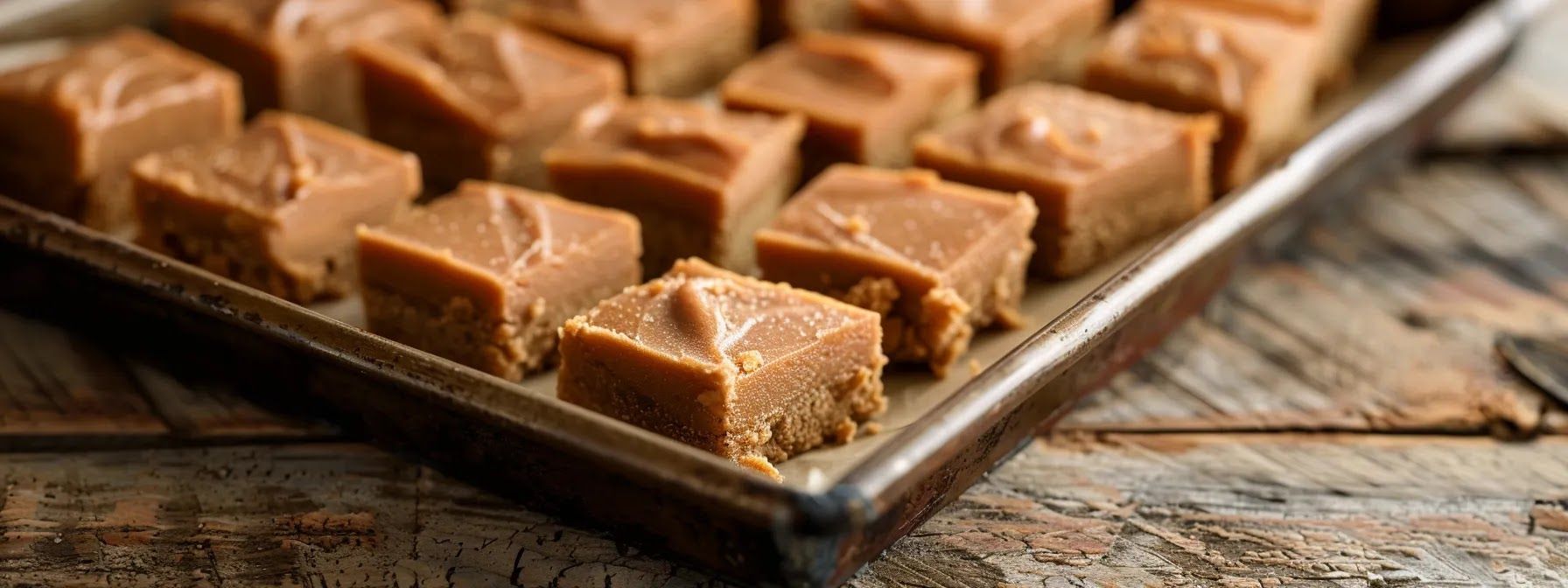
The Future of Fudge in Culinary Arts
The future of fudge in culinary arts promises exciting developments that blend tradition with innovation. As chefs experiment with fusion recipes, incorporating exotic ingredients like saffron or reimagining classic desserts such as tiramisu in fudge form, the boundaries of this beloved treat continue to expand.
Sustainability and ethical sourcing are becoming increasingly important, with confectioners focusing on the nutrition and origin of their ingredients. Meanwhile, social media platforms have become powerful tools for showcasing new fudge creations, from sheet pan fudge bars to intricate pastry-inspired designs. This digital landscape is shaping the next wave of fudge trends, inspiring both professional and home bakers to push the limits of what fudge can be.
Fusion Fudge Recipes Blending Traditions and Innovations
Fusion fudge recipes blend traditional techniques with innovative flavoring, creating unique confections that challenge conventional sweetness. Inspired by the farmer's market ethos, modern fudge makers experiment with varying percentages of cacao and alternative sweeteners to craft complex flavor profiles. These new creations often elicit enthusiastic replies from food critics and consumers alike, pushing the boundaries of what fudge can be:
- Matcha green tea fudge with white chocolate swirls
- Bourbon-infused pecan fudge with caramelized bacon bits
- Lavender honey fudge with toasted pistachios
- Chai spice fudge with crystallized ginger chunks
- Balsamic strawberry fudge with dark chocolate chips
Sustainability and Ethical Sourcing in Fudge Ingredients
Sustainability and ethical sourcing have become paramount in modern fudge production. Artisanal fudge makers now prioritize responsibly sourced cocoa, organic dairy, and locally harvested mixed nuts. Some confectioners have even experimented with unconventional ingredients like spice-infused baking mixes to create unique flavor profiles while supporting sustainable agriculture. This shift towards ethical sourcing has led to collaborations with organizations to document and preserve traditional fudge recipes, including variations of butter cake fudge, ensuring these culinary treasures are not lost to time:
- Fairtrade cocoa beans from small-scale farmers
- Organic, grass-fed dairy from local creameries
- Sustainably harvested nuts and fruits
- Ethically produced vanilla and spices
- Recycled and biodegradable packaging materials
The Role of Social Media in the Next Fudge Trends
Social media platforms have become the driving force behind emerging fudge trends, transforming the confectionery landscape and inspiring entrepreneurship in the digital age. Instagram-worthy creations like cinnamon-swirled fudge have captivated audiences and sparked new flavor combinations. Health-conscious consumers have embraced lower-fat fudge alternatives, prompting artisanal makers to experiment with innovative ingredients and share their creations online.
Conclusion
The evolution of fudge recipes from classic to contemporary showcases this beloved confection's enduring appeal and adaptability. Fudge has transformed from a simple accident in the late 19th century to a diverse and innovative treat, embracing new ingredients, cooking methods, and flavor combinations. Artisanal fudge makers have elevated this once-humble sweet to gourmet status, experimenting with exotic flavors, sustainable sourcing, and creative presentations. As technology and social media continue influencing culinary trends, fudge remains a canvas for culinary creativity, blending tradition with innovation to delight new generations of dessert enthusiasts.







